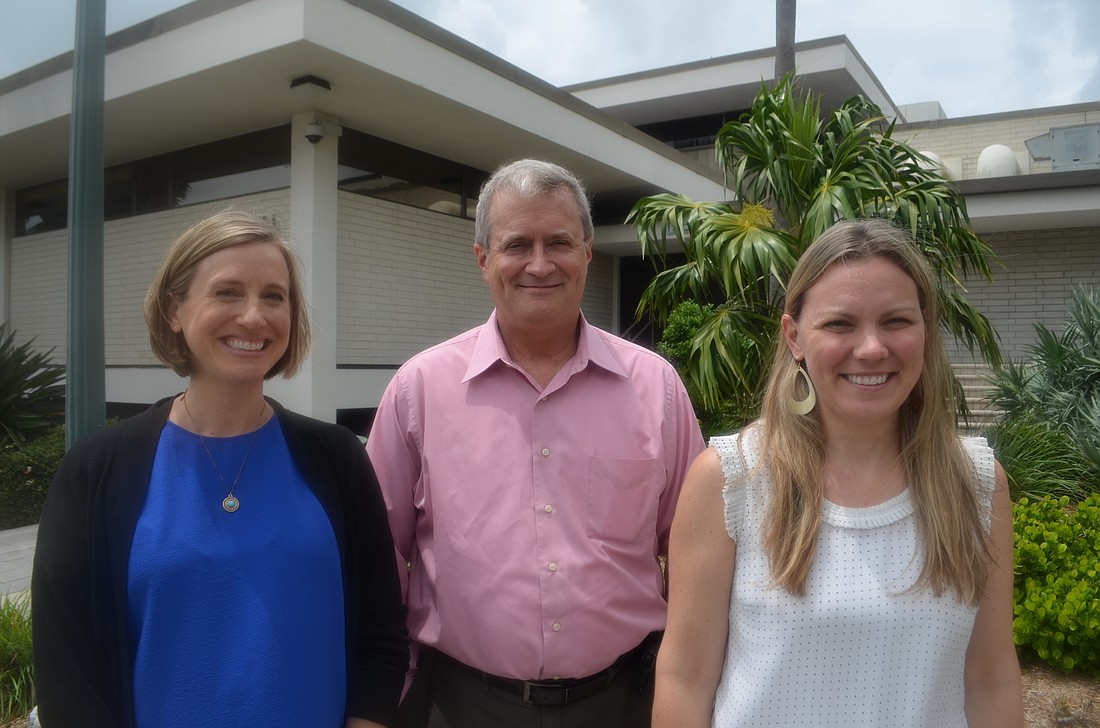- December 20, 2025
-
-
Loading

Loading

Steve Cover is working on creating a diverse transportation network in a city that’s primarily reliant on automobiles.
It’s not an easy task, but it’s one he believes is important. Cover, the city’s planning director since April 2017, identified a long-term transportation strategy as one of his first priorities when he accepted the newly created position.
Before he came to Sarasota, he’d worked in places such as Arlington, Va., which had a robust public transit system. He’d also worked in Atlanta, a car-centric city that has become famous for its gridlock. Based on his experience, he knows which path he’d prefer.
“I don’t want to become another Atlanta,” Cover said. “I’m really familiar with Atlanta and what they did — they reached the point where they were oversaturated. We can’t go down that path.”
In his first departmental budget, Cover asked for nearly $200,000 to fund two new positions focused specifically on transportation. His request was granted. Since then, the city has hired Colleen McGue as chief transportation planner and Megan Lui as transportation planner.
With the personnel in place, the planning department is ready to start the project Cover has been eager to begin since he joined the city: a comprehensive transportation master plan.
Cover is aware that, for residents eager to see quick fixes to seasonal traffic issues, the idea of producing a master plan may not sound particularly exciting. But the city’s problems didn’t crop up overnight, and staff says they can’t be rectified overnight, either. Cover said the city’s 18-month timeline for completing the study is aggressive. He’s optimistic that, once it’s done, the city can gradually strengthen a variety of transportation options.
McGue, who formerly worked as a planner with the Sarasota/Manatee Metropolitan Planning Organization, said she accepted her new job because of the city’s recent interest in developing alternative modes of transportation — including bike paths, trails and various forms of public transit. She thinks it’s the right strategy for Sarasota, partially because there aren’t many other options.
“A lot of our transportation network is already built out,” McGue said. “We don’t have a lot of space to widen roads, because we have a lot of buildings there already.”
When your ability to expand the road capacity in certain areas is constrained, it makes sense to instead focus on moving people around more efficiently, McGue said. You can fit more bikes on a road than you can cars, she said.
For some Sarasota residents, that’s sure to be a controversial philosophy. As staff has recently discussed changes to downtown streets designed to make them more pedestrian- and bicycle-friendly, some members of the public have argued the car should continue to rule the city’s transportation network.
Following a December workshop discussing changes to Second Street and Fourth Street, resident Dan Lobeck accused city staff of having contempt for automobile traffic.
“We’re going beyond this thinking of being ‘bicycle-friendly’ and making it hostile to automobile trips,” Lobeck said.
Staff is aware that some residents are sensitive about the prospect of change, particularly when it comes to traffic. They want to hear from the public during the master planning process, but they also want to make sure they’re getting a representative sampling of the city’s population.
McGue said staff wanted to reach more than the people who have the time to come to meetings. She cited The Bay Sarasota’s bayfront planning effort as a model to emulate. The city plans to post online surveys, hopeful that will encourage more people to participate in the process.
“There’s always going to be people who are really upset about whatever change it is we’re making,” McGue said. “We want to hear from the majority of people when we’re doing the planning, and that’s who we’re going to be planning for.”
“I’m really familiar with Atlanta and what they did. They reached the point where they were oversaturated. We can’t go down that path.” — Steve Cover
The city is prepared to broach other subjects that may not immediately sit well with residents. Staff plans to do an analysis of the city’s grid system, but already, McGue’s sense is that Sarasota actually has a pretty solid road network. Many of those roads serve as neighborhood streets, but McGue said there are places for traffic to move if primary streets are overwhelmed.
In the past, though, neighborhoods throughout the city have expressed concern about diverting traffic through residential streets. McGue said the city wants to be sensitive to those concerns, but staff also wants to have a frank discussion about the best way to weigh the distribution of cars.
“It’s a delicate balance,” McGue said. “We don’t want to be channeling high-speed traffic onto neighborhood roads, but they are public roads. Just because it’s in front of your house doesn’t mean you own it.”
Staff said residents interested in following the progress of the transportation master plan can check for updates on upcoming meetings and other information on the city’s website. Although planning staff members have been eager to begin this project, they said continued community engagement will be an essential component for the master plan to have its desired effect.
“Ultimately, when it gets to the commission, we want to have so much public support for this and such momentum that it would really be hard for it to die out,” Cover said. “That’s going to be a critical piece of this work effort.”